This is what Judy Estrin calls the United States’ decline in fostering innovation. A former CTO for Cisco Systems, founder of four other technology companies, and auther of Closing the Innovation Gap, Estrin is quoted in an August 31 New York Times article,
I am generally not an alarmist, but I have become more and more concerned about the state of our country and its innovation … that the united states as a whole, no longer fosters the kinds of innovation necessary to develop groundbreaking technologies and sustain economic growth. ((Miller. Claire Cain. “Another Voice Warns of an Innovation Slowdown,” The New York Times 31 Aug 2008. 3 Sep 2008 <http://www.nytimes.com/2008/09/01/technology/01estrin.html?_r=2&oref=slogin&oref=slogin> ))
 That statement says a lot, and much of it is arguable. The issues of economic sustainment and growth are far more complex than innovation alone. Yet, most of us agree that in this time of rapid change, prosperity depends on driving that change, not being pulled along behind it.
That statement says a lot, and much of it is arguable. The issues of economic sustainment and growth are far more complex than innovation alone. Yet, most of us agree that in this time of rapid change, prosperity depends on driving that change, not being pulled along behind it.
The article, which also gives voice to some who disagree with Estrin, quotes another of other reports, reminding us that:
..federal financing of research in the physical sciences was 45 percent less in 2004 than in 1976 and that 93 percent of students in grades five through eight learn science from teachers who do not hold degrees or certifications in the topics. ((Committee on Prospering in the Global Economy of the 21st Century, Rising Above the Gathering Storm. 2007. <http://books.nap.edu/catalog.php?record_id=11463>))
Engineer, venture capitalists and entrepreneur, Robert Compton says, according to the aritcle,
that the United States is losing its innovation edge to China and India. Chinese and Indian children are required to take more science courses than students in the United States, said Mr. Compton. … Of college graduates, 30 percent to 45 percent in India and China have engineering degrees, compared with 5 percent in the United States. Venture financing and patent applications are falling in Europe and the United States and rising in China and India.
He continues that 60% of engineering doctorates from U.S. universities are granted to foreign nationals, who are no longer staying in the U.S. “The American economy is not as exciting as China and India, and a lot of them are going back home,” he said.
Also worthy of note is that Compton also created, produced, and financed Two Million Minutes, which I’m sure many of you have seen (though I haven’t).
My Take:
Although science, technology, engineering, and mathematics are important/essential, I’m not sure that innovation is the same thing. I think that you can learn to be innovative in English class, history, health, and certainly creative arts.
I know I’ve said this before, but to me, and my own limited vocabulary, I think that innovation and creativity are a problem for us, in that they are both much too vague to really wrap instructional/learning activity around. I like the term inventiveness much better, because inventing something attaches the word, invent, to the thing or process that was invented. There’s a hard connection here, that is more difficult to make with innovation and creativity.
You can attack problems in virtually all disciplines inventively, and its inventiveness can be judged.
Again, STEM subjects are important, but without the ability to apply them within a social, cultural, and physical context leads to knowledge, but not necessarily innovation. And without the skills to talk about them compellingly leaves STEM fairly sterile — to me.
2? Worth
 Anyway, in testing links, I found myself at Will Richardson’s blog, and scanning through his report on his first 90 minutes with Spore. I’ve not gotten it yet, but texting my son, found that he was in outer space in less than six hours. But he said that the fun was in going back and just playing around with the possibilities, testing ideas about adaptation. [Image ((“Spore Everywhere.” Shadowstorm’s Photostream. 16 May 2006. 14 Sep 2008 <http://flickr.com/photos/shadowstorm/147918291/>. ))]
Anyway, in testing links, I found myself at Will Richardson’s blog, and scanning through his report on his first 90 minutes with Spore. I’ve not gotten it yet, but texting my son, found that he was in outer space in less than six hours. But he said that the fun was in going back and just playing around with the possibilities, testing ideas about adaptation. [Image ((“Spore Everywhere.” Shadowstorm’s Photostream. 16 May 2006. 14 Sep 2008 <http://flickr.com/photos/shadowstorm/147918291/>. ))]

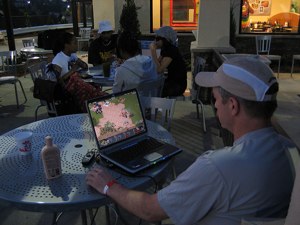 This from Clive Thompson, at WIRED, and by way of my friend, Smythe Richbourg: [Image ((Trapp, Charlene. “Playing Video Games – Passing Time.” Charchen’s Photostream. 29 Mar 2007. 9 Sep 2008 <http://flickr.com/photos/charchen/439072634/>. ))]
This from Clive Thompson, at WIRED, and by way of my friend, Smythe Richbourg: [Image ((Trapp, Charlene. “Playing Video Games – Passing Time.” Charchen’s Photostream. 29 Mar 2007. 9 Sep 2008 <http://flickr.com/photos/charchen/439072634/>. ))]


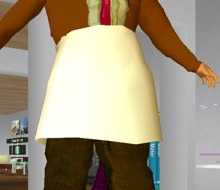

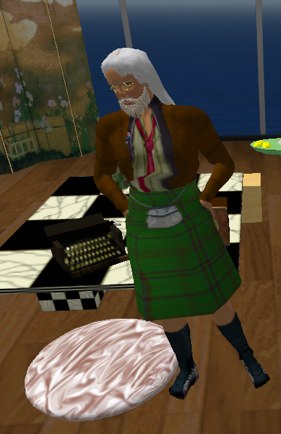
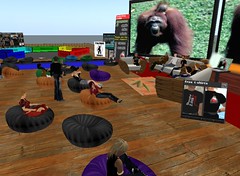 I just backed out of Second Life for the second Preconference conversation, precursoring the Learning 2.008 conference in Shanghai later this month. The two invited speakers this time were myself, Suriawang, and Scottish educator,
I just backed out of Second Life for the second Preconference conversation, precursoring the Learning 2.008 conference in Shanghai later this month. The two invited speakers this time were myself, Suriawang, and Scottish educator, ![[Click to Enlarge] Opinionator](http://davidwarlick.com/images/Snapshot_018_sml-20080907-115245.jpg)
 I’m home for six days, sixteen hours, and some change, and I’m so switched off that I just can’t get to some serious things that I’d shoved over to this seemingly mythical time at home. Mostly, I’ve been playing. Yesterday I replaced the theme of my blog, because when I saw it pulled up on a PC the other day, it looked nasty. So I started simple, with the WordPress “classic” theme, and then fleshed out the CSS file. What do you think?
I’m home for six days, sixteen hours, and some change, and I’m so switched off that I just can’t get to some serious things that I’d shoved over to this seemingly mythical time at home. Mostly, I’ve been playing. Yesterday I replaced the theme of my blog, because when I saw it pulled up on a PC the other day, it looked nasty. So I started simple, with the WordPress “classic” theme, and then fleshed out the CSS file. What do you think?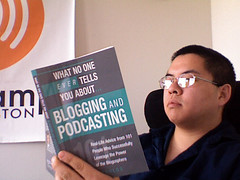 I just received an e-mail message from a teacher who would like to introduce blogging in his classroom — student blogging. He says…
I just received an e-mail message from a teacher who would like to introduce blogging in his classroom — student blogging. He says… That statement says a lot, and much of it is arguable. The issues of economic sustainment and growth are far more complex than innovation alone. Yet, most of us agree that in this time of rapid change, prosperity depends on driving that change, not being pulled along behind it.
That statement says a lot, and much of it is arguable. The issues of economic sustainment and growth are far more complex than innovation alone. Yet, most of us agree that in this time of rapid change, prosperity depends on driving that change, not being pulled along behind it.